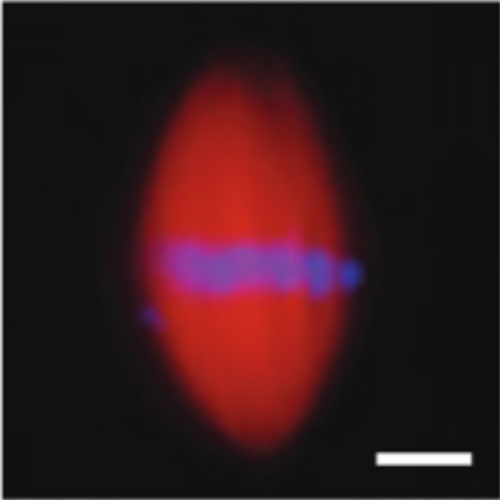XMAP215 activity sets spindle length by controlling the total mass of spindle microtubules.
Metaphase spindles are microtubule-based structures that use a multitude of proteins to modulate their morphology and function. Today, we understand many details of microtubule assembly, the role of microtubule-associated proteins, and the action of molecular motors. Ultimately, the challenge remains to understand how the collective behaviour of these nanometre-scale processes gives rise to a properly sized spindle on the micrometre scale. By systematically engineering the enzymatic activity of XMAP215, a processive microtubule polymerase, we show that Xenopus laevis spindle length increases linearly with microtubule growth velocity, whereas other parameters of spindle organization, such as microtubule density, lifetime and spindle shape, remain constant. We further show that mass balance can be used to link the global property of spindle size to individual microtubule dynamic parameters. We propose that spindle length is set by a balance of non-uniform nucleation and global microtubule disassembly in a liquid-crystal-like arrangement of microtubules.

- Nat. Cell Biol. 2013 Sep 25;15(9):1116-22
- 2013
- Cell Biology
- 23974040
- PubMed
Enabled by:
